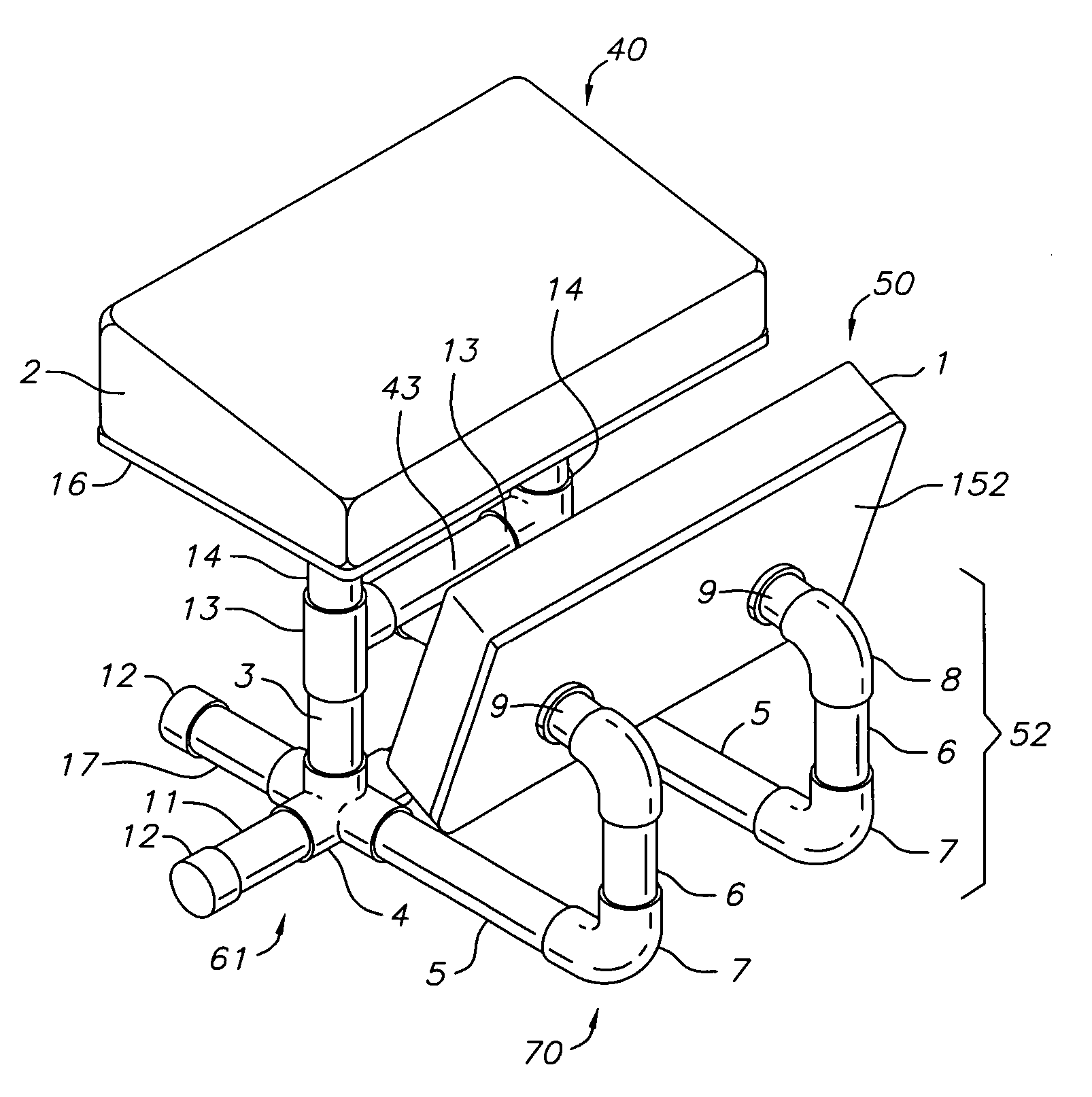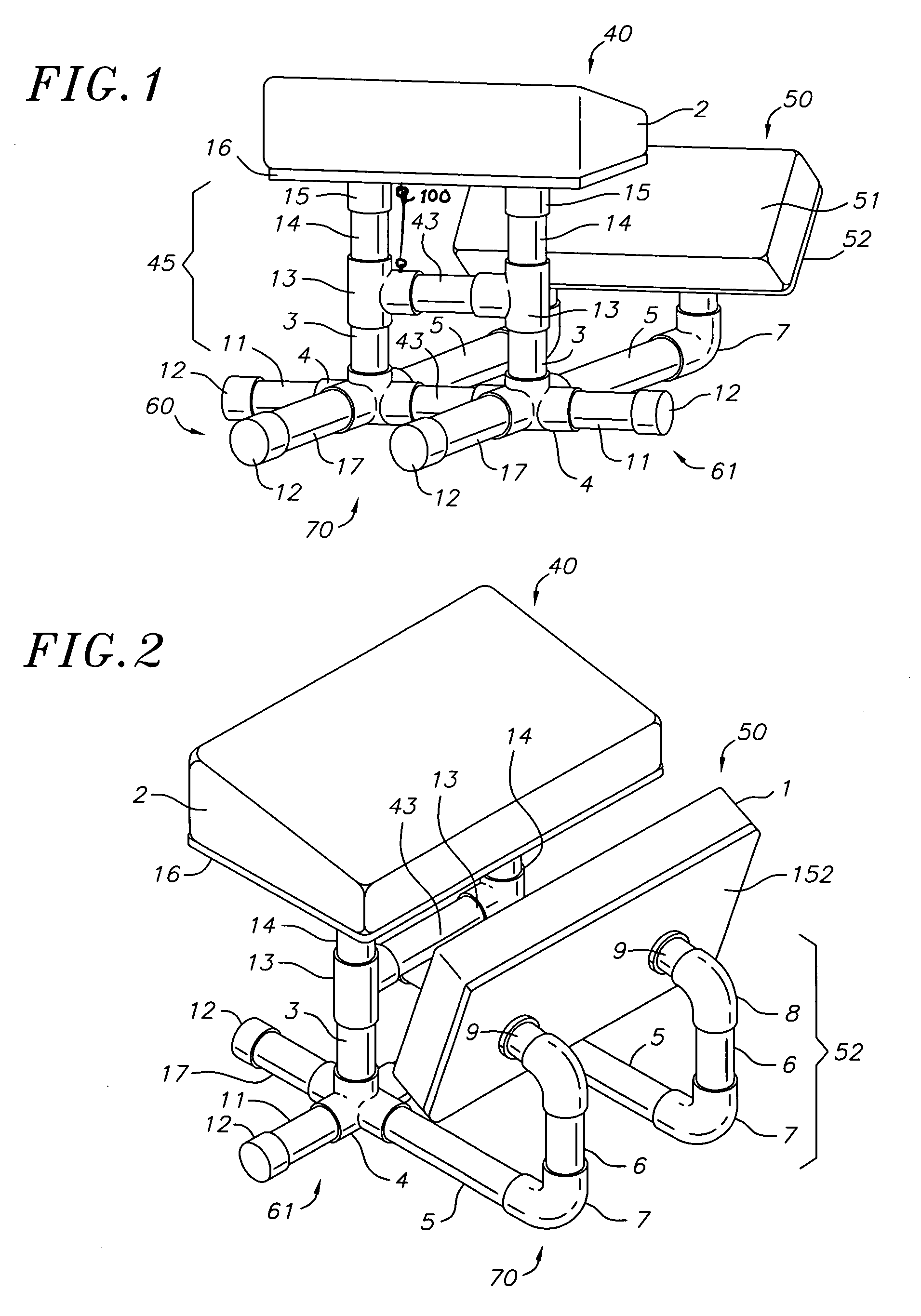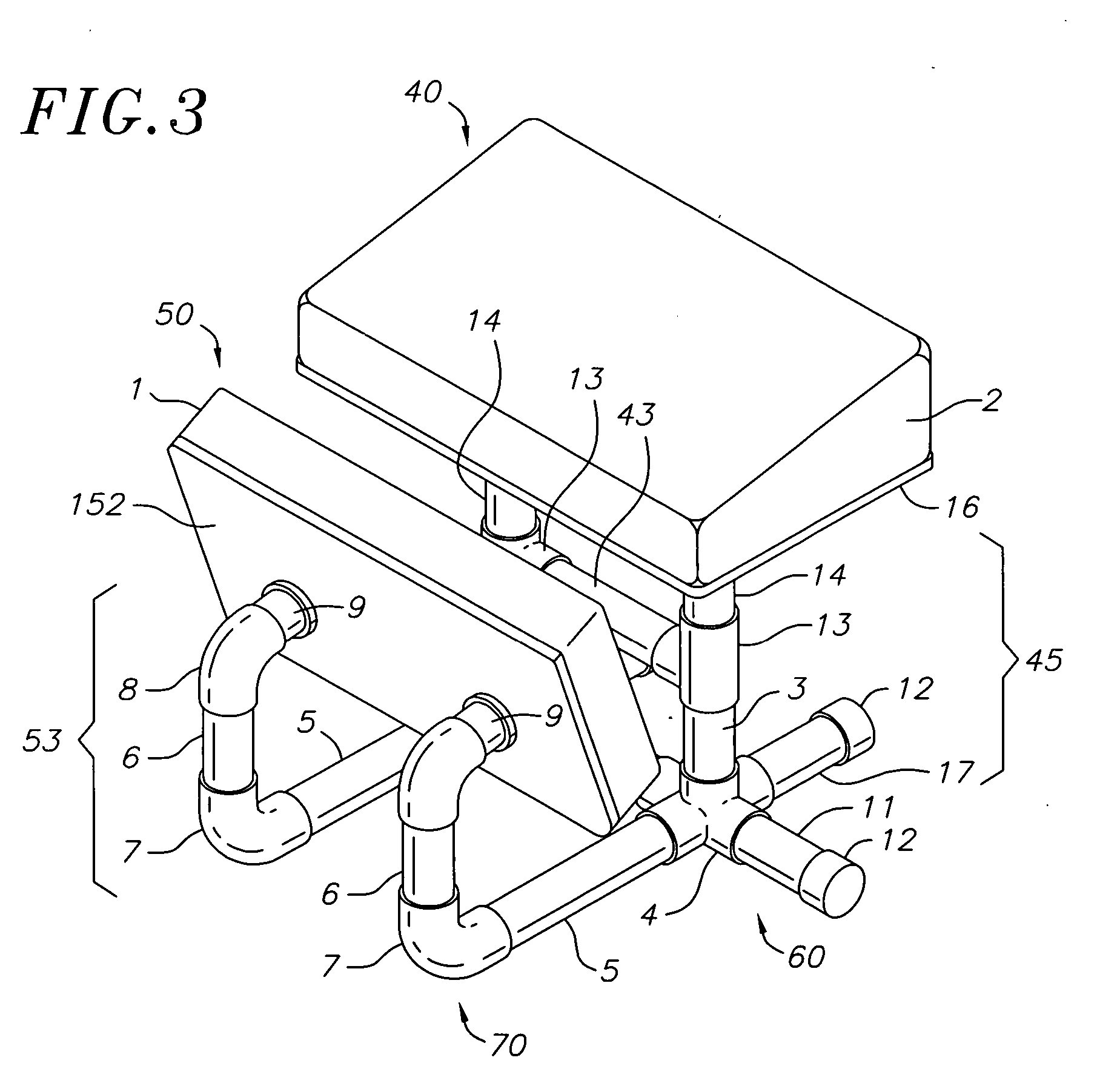Chair for an enhanced learning environment
- Summary
- Abstract
- Description
- Claims
- Application Information
AI Technical Summary
Benefits of technology
Problems solved by technology
Method used
Image
Examples
Embodiment Construction
[0031] The chair of this invention provides movement and dynamic activity and is designed to activate specific musculature, while locking students into an upright, kneeling-like position. This allows and provides dynamic rocking and movement activity, which helps a student to be alert and orient to pertinent learning information while remaining in his / her respective learning place. The chair affects attention to learning opportunity, fine motor legibility (handwriting or motor planning), and written production along with educational retention. Movement is relevant to memory. Occupational therapists continue to develop the tools for classrooms in order to address sensory processing issues. This chair is a seating option for learning.
[0032] The chair, as shown in FIGS. 1 through 8, has three basic components. Namely, a seat member 40, a knee-shin rest member 50, and foot rest members 60 and 61, which are interconnected and supported by base or base unit 70. Seat 40 is attached to bas...
PUM
 Login to View More
Login to View More Abstract
Description
Claims
Application Information
 Login to View More
Login to View More - R&D
- Intellectual Property
- Life Sciences
- Materials
- Tech Scout
- Unparalleled Data Quality
- Higher Quality Content
- 60% Fewer Hallucinations
Browse by: Latest US Patents, China's latest patents, Technical Efficacy Thesaurus, Application Domain, Technology Topic, Popular Technical Reports.
© 2025 PatSnap. All rights reserved.Legal|Privacy policy|Modern Slavery Act Transparency Statement|Sitemap|About US| Contact US: help@patsnap.com



